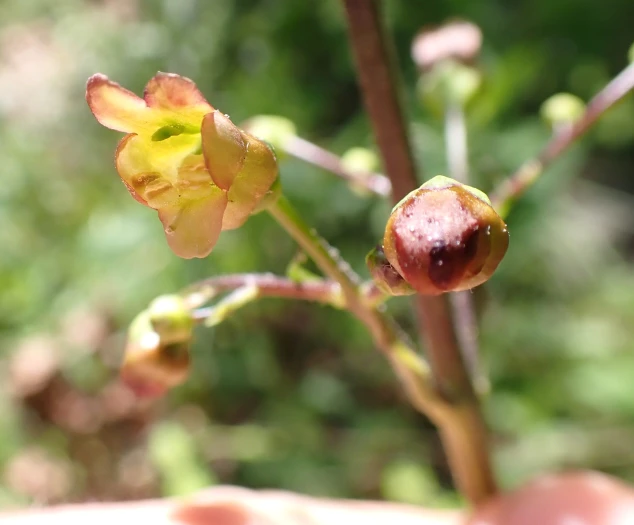Lanceleaf Figwort
(Scrophularia lanceolata)
Lanceleaf Figwort (Scrophularia lanceolata)
/
/

© Taro Ietaka
CC BY 4.0
Image By:
© Taro Ietaka
Recorded By:
Copyright:
CC BY 4.0
Copyright Notice:
Photo by: © Taro Ietaka | License Type: CC BY 4.0 | License URL: http://creativecommons.org/licenses/by/4.0/ | Uploader: t_tallhouse | Publisher: iNaturalist |



















Estimated Native Range
Climate Requirements for Coram, New York
| This Plant | Your Site | Plant Suitability for Your Location | ||
|---|---|---|---|---|
| • Precipitation | 8" - 118" | 43" | Aquatic | Aquatic |
| • High Temp. | 53°F - 95°F | 83°F | Your summer temperatures are normal for this plant. | Excellent |
| • Low Temp. | -10°F - 40°F | 23°F | Your winter temperatures are normal for this plant | Excellent |
This plant may not grow well at your location - your precipitation is too high.
Summary
Scrophularia lanceolata, commonly known as lanceleaf figwort or American figwort, is a perennial herb that is native to a variety of habitats in North America, including open woodlands, forest edges, and riparian areas, extending from Canada through much of the United States, but is less common in the arid regions and the southeastern quadrant. It typically grows to a height of 2 to 6 feet with a similar spread and is characterized by its erect or spreading stems, toothed, lance-shaped leaves, and small, greenish to brownish or dull pink, urn-shaped flowers that bloom in the summer months. The flowers, while not particularly showy, are intriguing upon close inspection and can attract pollinators.
Lanceleaf figwort is valued for its adaptability to various garden conditions and its historical medicinal uses. It is often used in native plant gardens, restoration projects, and as a background plant in perennial borders due to its height. This plant prefers moist, well-drained soils but can tolerate a range of conditions from part shade to full sun. While it is not particularly drought-tolerant, it can survive occasional dry spells once established. Gardeners should be aware that it can spread by seed and become somewhat aggressive in favorable conditions.CC BY-SA 4.0
Lanceleaf figwort is valued for its adaptability to various garden conditions and its historical medicinal uses. It is often used in native plant gardens, restoration projects, and as a background plant in perennial borders due to its height. This plant prefers moist, well-drained soils but can tolerate a range of conditions from part shade to full sun. While it is not particularly drought-tolerant, it can survive occasional dry spells once established. Gardeners should be aware that it can spread by seed and become somewhat aggressive in favorable conditions.CC BY-SA 4.0
Plant Description
- Plant Type: Herb
- Height: 1-6 feet
- Width: 1-2 feet
- Growth Rate: Moderate
- Flower Color: Brown, Green, Yellow
- Flowering Season: Spring, Summer
- Leaf Retention: Deciduous
Growth Requirements
- Sun: Full Sun, Part Shade
- Water: Medium
- Drainage: Medium, Fast
Common Uses
Bee Garden, Bird Garden, Butterfly Garden, Low Maintenance
Natural Habitat
Native to a variety of habitats including open woodlands, forest edges, and riparian areas
Other Names
Common Names: Lanceleaf Figwort, Lance-leaved Figwort, Hare Figwort, Lanceolate Figwort, Early Figwort
Scientific Names: Scrophularia lanceolata, Scrophularia dakotana, Scrophularia dimidiata, Scrophularia lanceolata f. lanceolata, Scrophularia lanceolata f. velutina, Scrophularia lanceolata var. occidentalis, Scrophularia leporella, Scrophularia nodosa var. lanceolata, Scrophularia nodosa var. occidentalis
GBIF Accepted Name: Scrophularia lanceolata